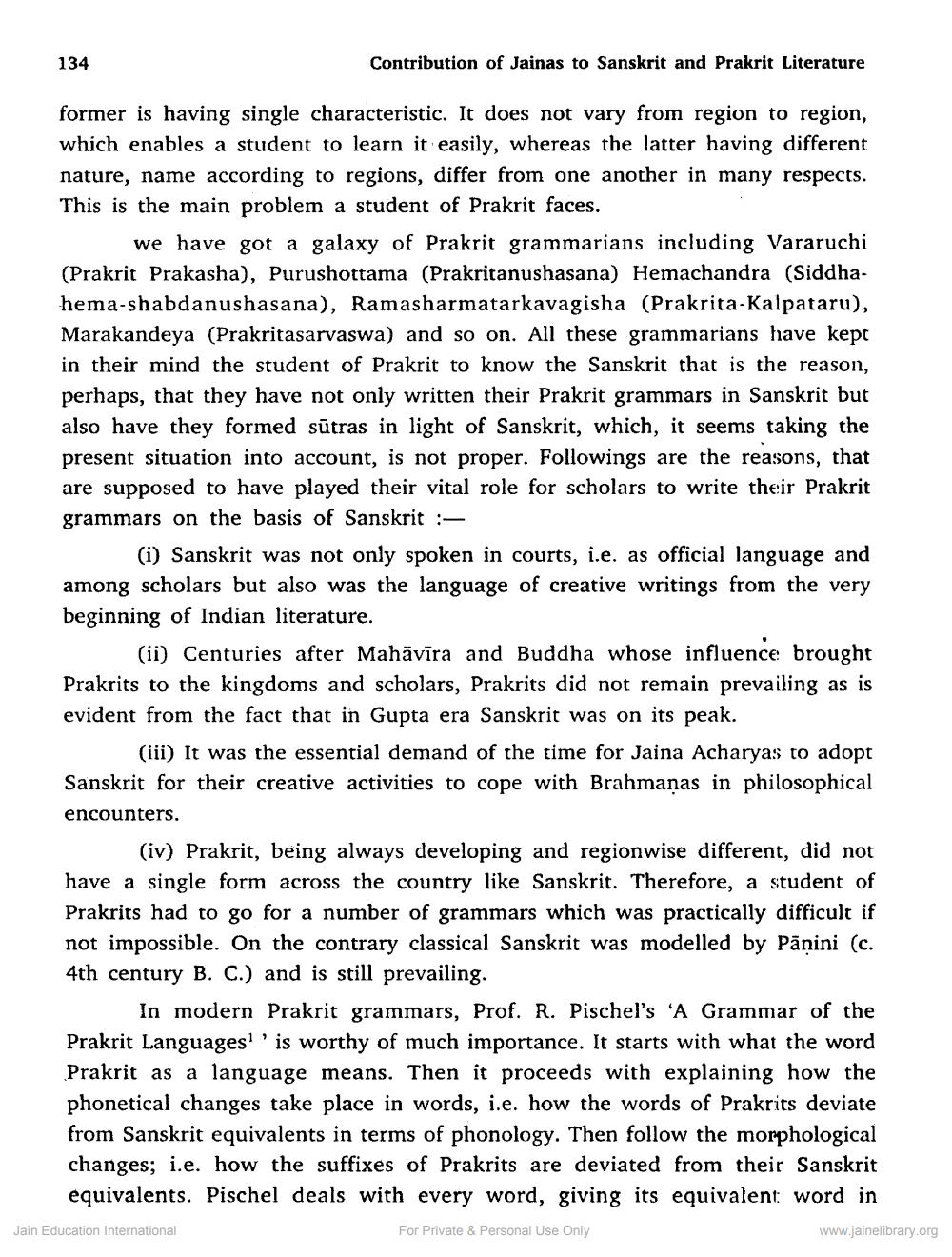________________
134
Contribution of Jainas to Sanskrit and Prakrit Literature
former is having single characteristic. It does not vary from region to region, which enables a student to learn it easily, whereas the latter having different nature, name according to regions, differ from one another in many respects. This is the main problem a student of Prakrit faces.
we have got a galaxy of Prakrit grammarians including Vararuchi (Prakrit Prakasha), Purushottama (Prakritanushasana) Hemachandra (Siddhahema-shabdanushasana), Ramasharmatarkavagisha (Prakrita-Kalpataru), Marakandeya (Prakritasarvaswa) and so on. All these grammarians have kept in their mind the student of Prakrit to know the Sanskrit that is the reason, perhaps, that they have not only written their Prakrit grammars in Sanskrit but also have they formed sūtras in light of Sanskrit, which, it seems taking the present situation into account, is not proper. Followings are the reasons, that are supposed to have played their vital role for scholars to write th grammars on the basis of Sanskrit :
(i) Sanskrit was not only spoken in courts, i.e. as official language an among scholars but also was the language of creative writings from the very beginning of Indian literature.
(ii) Centuries after Mahāvīra and Buddha whose influence brought Prakrits to the kingdoms and scholars, Prakrits did not remain prevailing as is evident from the fact that in Gupta era Sanskrit was on its peak.
(iii) It was the essential demand of the time for Jaina Acharyas to adopt Sanskrit for their creative activities to cope with Brahmanas in philosophical encounters.
(iv) Prakrit, being always developing and regionwise different, did not have a single form across the country like Sanskrit. Therefore, a student of Prakrits had to go for a number of grammars which was practically difficult if not impossible. On the contrary classical Sanskrit was modelled by Panini (c. 4th century B. C.) and is still prevailing.
in modern Prakrit grammars, Prof. R. Pischel's 'A Grammar of the Prakrit Languages!' is worthy of much importance. It starts with what the word Prakrit as a language means. Then it proceeds with explaining how the phonetical changes take place in words, i.e. how the words of Prakrits deviate from Sanskrit equivalents in terms of phonology. Then follow the morphological changes; i.e. how the suffixes of Prakrits are deviated from their Sanskrit equivalents. Pischel deals with every word, giving its equivalent word in
Jain Education International
For Private & Personal Use Only
www.jainelibrary.org




